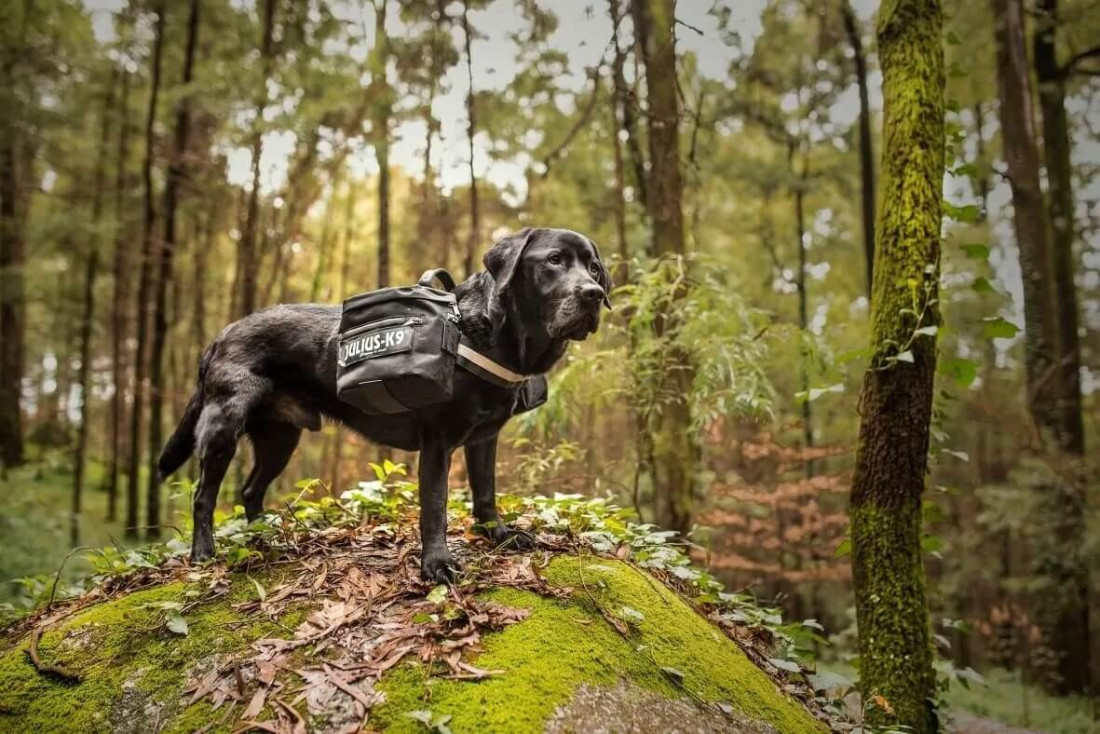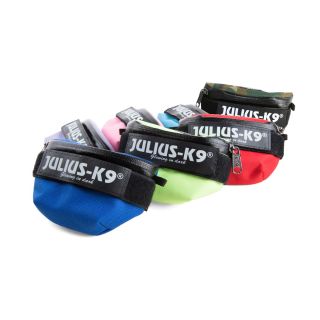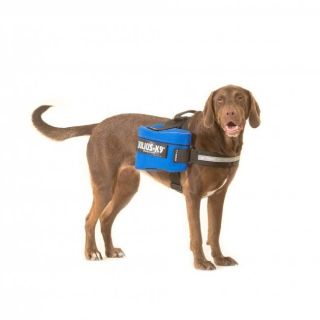Dog saddle bags are pouches that are fitted to the side of your dog’s harness. They are useful in storing gear and other accessories while out on walks.
What can you put in your dog’s saddle bag?
Many dog owners like to store practical items while they are out for short or long walks like:
- poo bags
- collapsible water bowls
- attachable safety lights
- dog first aid kit if out on longer hikes
- treats
- toys like balls and tugs
- other accessories like keys and wallet if you don’t want to bring your own separate bag
How much weight can you add to bags?
Commonly, dog’s can comfortably carry 10% to 12% of their body weight in saddle bags. This does vary between the size of your dog and their breed, with larger, bulker, breeds able to handle more weight.
However, every dog is different so if you are planning on storing heaver items in the saddle bag then it’s recommended that you talk to your veterinarian. This is especially important for older dogs, dogs with health issues, and breeds more prone to muscle and joint injuries.
How to fit saddle bags safely
You should never over fill the backpack and only store what your dog is comfortable with carrying, and as mentioned above you should only pack up to 10% to 12% of your dog’s body weight. The bag itself should be fitted tightly but comfortably so weight can be evenly distributed across the dog’s torso.
Make sure the bag you are using is suitable for your dog’s size and breed. Saddle and side bags attach to any compatible dog harness and our IDC® Powerharnesses can be easily fitted with our official saddle bags. We have easy to follow step-by-step guides of how fit these to our harnesses:
Are side/saddle bags better than dog backpacks?
The position of the dog bag is vitally important. The majority of the weight should always be kept off the dog’s spine and should be focused around their shoulders. This is why here at JULIUS-K9® we do not stock backpacks, but favour side bags and saddle bags as they can sit more comfortably and safely around the dog’s side.
If you do choose to use a backpack, it should be one that’s been specifically designed for dogs. This will ensure a correct fit that can be easily adjusted to suit a comfortable and safe wearing position for your dog.
Heatstroke
With the extra weight your dog is now carrying, you should keep an eye on if they are getting overheated in hot weather. See our article on Dog Heatstroke & Keeping Your Pet Cool In Hot Weather for more information on how to spot overheating in your dog.
Other safety factors
You know your dog better than anyone, so you should spot if they are experiencing discomfort wearing saddle bags while out for longer periods. Some safety factors to be aware of include:
Water
If your dog likes the water consider taking off any bags when you’re around ponds, steams, or rivers, as the extra weight could cause them issues while in the water.
Feet and pads
With the extra weight they are carrying, their feet and paw pads may become overused and damaged, so keep a close eye on if they start to slow down or seem uneasy walking. This is especially important on longer walks if they are new to wearing saddle bags.
Chafing
Over long periods, the bag’s weight may rub and cause chafing on the dog’s skin. A well fitted harness minimises the chances of this happening but you should keep an on your dog’s skin that is in direct contact with the side bags.








